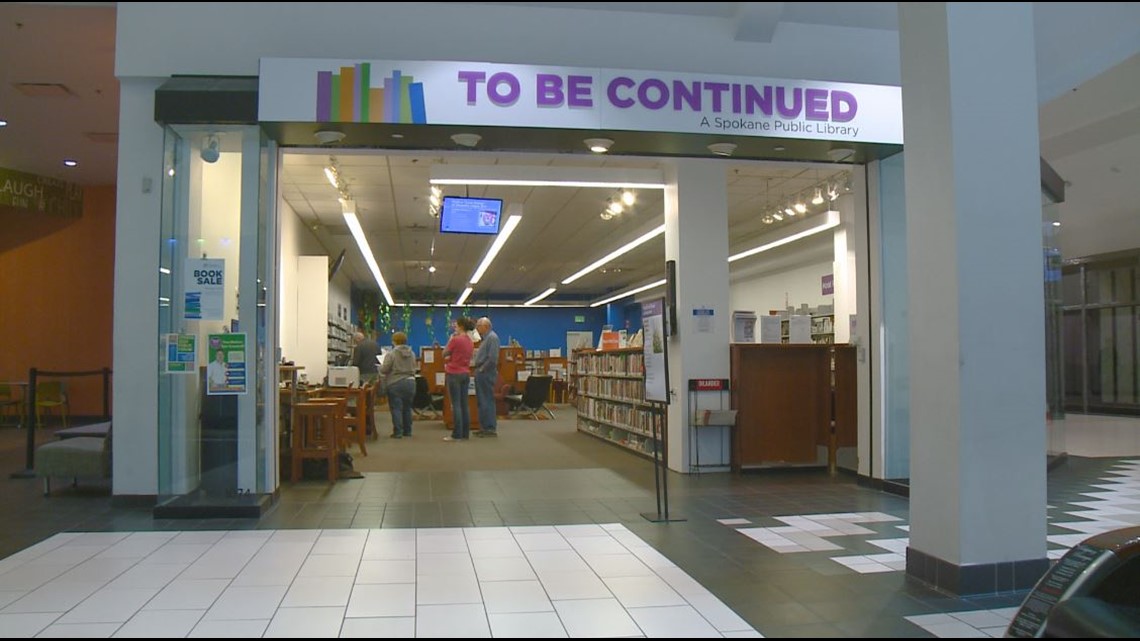SPOKANE, Wash. — Across the country, retail stores located in shopping malls are closing at a high rate.
According to the bank Credit Suisse, about 8,700 retail shops in malls closed in the United States in 2019. At Spokane’s 955,000 square-foot NorthTown Mall, four stores, including Sears, closed in 2019.
In an effort to buck the trend of shoppers being less drawn to these retail storefronts, malls have started to experiment with offering “experiences,” such as aquariums and virtual reality arcades, to bring more shoppers through the doors.
“It’s not just a retail space anymore, not any longer. No, changes in the retail environment and in the industry are that we’ve added more experimental things,” said NorthTown Mall General Manager Grove Ayers.
The reason for the shift comes from the industry reacting to a change in shopping trends, with more and more people shopping online, instead of at physical storefronts.
Malls offer more experiences, less shopping
According to Ayers, 30 years ago, shoppers such as teenagers were drawn to malls because it was a way to spend time with friends and share experiences.
But now, he said, teenagers turn to mobile devices and other online forms of communication, instead of hanging out at malls.
“Thirty years ago, if you were a teenager, you went to the mall because that’s where you could co-mingle with your friends and have some of these peer experiences and now, a lot of that communication takes place on a handheld device or online in some way,” Ayers said.
The shopping mall industry’s shift in focus to these new shopping habits are apparent at Ayer’s NorthTown Mall, where only about half of the 97 businesses are retail shops. The other half include fine dining, entertainment venues and other experiences.
One such business is Virtual Gamerz, a virtual reality gaming arcade in the NorthTown Mall. Owner Olivia Garrison describes the experience as entering a whole new world.
“It’s like opening a doorway, and when you put the headset on, you’re walking through the doorway, closing the door, and leaving this 3D world behind and stepping into a whole new 3D world,” she said.


As Garrison describes it, businesses renting space in malls are focusing more on fun times for families.
“The mall is the future of family oriented gaming and experiences,” she said.
Other examples of these businesses at NorthTown Mall include a branch of the Spokane Public Library, the Blue Zoo Interactive Aquarium, the Get Air Trampoline Park, and more.
And this change seems to be working at NorthTown, as Ayers said foot traffic was up in 2019 as compared to 2018, which could be a sign the experimental approach is working.
“People are hungry for experiences and they’re hungry for human interaction,” Ayers said.


It also appears to be working across the country, as is evident at the American Dream Mall in New Jersey. Some people have called it the future of malls, a mecca for family centered activities. The mall has five roller coasters, the world’s largest indoor wave pool and a year-round ski slope.
These changes show that, for at least some malls, the decision has been to adapt in the face of declining interest in retail storefronts.
But Ayers said this doesn’t mean we won’t see any shopping malls that are still focused solely on retail in future, as some still see business thriving with retail stores.
“I think there will continue to be a few malls that will be what malls have always been,” Ayers said.
While data suggests people are more attracted to these experience-based businesses, it doesn’t mean that people don’t like going out and shopping in person instead of the old-fashioned way.
Some people still like physical storefronts
There are many benefits to shopping online. People can do it from the comfort of their own home, there are no long lines to wait in, a variety of different retailers are available in seconds and it’s easy to compare prices on a screen.
But, while many people are more drawn to online shopping instead of walking into the traditional brick-and-mortar store, research out of Washington State University suggests that a large amount of people still prefer doing their shopping in person instead of through a screen.
WSU’s Carson College of Business recently published its 2019 Retail Survey, which looked at shopping trends in the Pacific Northwest.
The survey found that 43 percent of consumers prefer to do their shopping in-store. Reasons for this preference included the ability to see and touch products in-person before purchasing.


But the number one reason cited for this preference? Great customer service experiences.
With more people wanting great customer service and experiences, WSU Carson College of Business Research Spokesman Eric Hollenbeck said it presents a great opportunity for businesses to draw in customers.
“This presents a great opportunity for businesses to really engage with customers, and really help create an experience that’s unique to shopping in stores that you can’t find online,” Hollenbeck said.
Ayers said that, in addition to offering more experiences, people like to see malls that give back to their community by being civically engaged and offering their space to the public.
“What we’re seeing in the industry is more diversification, so taking that mall and, in a lot of cases, making it physically smaller, getting rid of some of the shop space and turning that into community space,” Ayers said.
Hollenbeck holds similar views, saying that these things matter to those who shop at malls.
“It might not seem like something that pays off in terms of attracting new customers, but we’re finding that’s something that customers really do value,” Hollenbeck said.
What will it take for malls to survive going forward, in the face of more people picking up their phones and laptops to shop?
According to Garrison, focusing on families and their interests is the key.
“In order for these malls to survive, they’re going to have to be driven to be more family oriented business,” she said.
Have a tip for our investigative team? Email your tips to investigators@krem.com

